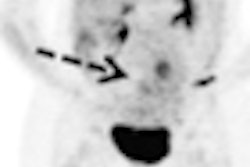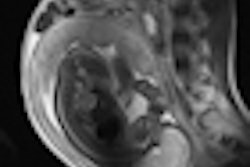When a pregnant woman needs to undergo a CT or nuclear medicine procedure, the risk that her fetus will develop cancer as a child is less than one-tenth of 1%, according to a population-based cohort study of 1.8 million maternal-child pairs living in Ontario, Canada.
However, the research team of Toronto clinicians could not exclude the possibility that fetal exposure to CT radiation dose or radionuclide imaging is carcinogenic, because the broad confidence interval of the statistical analysis indicated that the risk of a pediatric malignancy could be as high as 1.8 times that of an unexposed pregnancy. The findings were published in the September issue of PLoS Medicine (2010, Vol. 7:9, e1000337).
Principal investigator Joel Ray, MD, from the department of obstetrics and gynecology at St. Michael's Hospital in Toronto, and colleagues analyzed administrative and healthcare utilization databases to identify 1,835,517 maternal-child pairs from 1991 to 2008 in the province of Ontario. They identified all term obstetrical deliveries and newborn records, and both inpatient and outpatient radiology records, and linked these data to the records of the Ontario Cancer Registry to identify children who developed a malignant tumor after birth.
A total of four children who were born to four out of 5,590 pregnant women who received either a CT or nuclear medicine procedure developed childhood cancer during a nearly nine-year median follow-up duration. This represented a cancer incidence rate of 1.13 per 10,000 person years.
By comparison, 2,539 children born to 1,829,927 women who had no radiation exposure at pregnancy were diagnosed with childhood cancers. This represented a rate of 1.56 per 10,000 person years.
The demographic characteristics of both groups were generally similar. The rates of chromosomal and congenital anomalies were about the same in both groups, at 0.13% for the children exposed as fetuses and 0.11% for the unexposed children for chromosomal anomalies, and 3.7% versus 3.9% for congenital anomalies, respectively.
During the 17-year time span of the study, the number of CT and nuclear medicine scans in Ontario steadily increased, from 110 imaging procedures per 1,000 live-birth pregnancies in 1992-1993 to 762 procedures per 1,000 live-birth pregnancies in 2007-2008.
The authors recommended that even though the risk from CT and nuclear medicine procedures is low, beta human chorionic gonadotropin (hCG) testing should be performed in potentially pregnant women before imaging with radiation-based modalities. In addition, women of all reproductive ages should wear lead apron shielding during procedures, regardless of pregnancy status. Finally, imaging modalities that do not use ionizing radiation, such as MRI and ultrasound, should be considered when appropriate.
By Cynthia E. Keen
AuntMinnie.com staff writer
September 8, 2010
Related Reading
Study: Fetal radiation dose high for ERCP, April 29, 2009
U.K. report published on acceptable dose to pregnant women, April 8, 2009
Utilization of imaging increasing among pregnant patients, March 18, 2009
Radiation exposure of pregnant women doubles in 10 years, November 28, 2007
Data, not fear, should drive CT decisions in pregnancy, July 10, 2006
Copyright © 2010 AuntMinnie.com




















